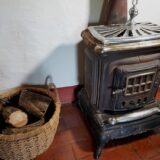How To Clean Washing Machine: The Ultimate Guide

How To Clean Washing Machine
Introduction
A clean washing machine is pivotal not just for hygiene but also for the efficiency and longevity of your appliance. Over time, washing machines can accumulate detergent residue, develop odors, and become a breeding ground for mold and mildew. Regular cleaning is essential to maintain optimal performance and ensure your clothes come out fresh and clean.
Understanding Your Washing Machine
Before you start the cleaning process, it’s essential to understand your machine’s type and specific needs. Top-load and front-load washing machines have different designs and thus, varying cleaning requirements. Always refer to your machine’s manual for tailored cleaning instructions and to avoid any damage.
View Washing Machine On Amazon
Preparation for Cleaning
Safety first! Ensure the machine is disconnected from power before cleaning. Gather necessary tools and materials such as cleaning agents (commercial or natural), brushes, and cloths.
Deep Cleaning Methods
For a more thorough clean, consider using natural cleaners like vinegar and baking soda, which are effective and eco-friendly. You can also use commercial cleaning products designed for washing machines. Running a hot water cycle with a cleaning agent can help in deep cleaning.
View Washing Machine Cleaner on Amazon
Choosing Your Cleaning Agents
When it comes to cleaning agents, you have several options:
- Commercial Cleaners: These are formulated specifically for washing machines, offering a hassle-free solution. Just follow the instructions on the label.
- White Vinegar: An eco-friendly and cost-effective cleaner, vinegar is excellent for removing soap scum and mineral deposits.
- Baking Soda: Ideal for eliminating odors, baking soda can be used alone or with vinegar for a thorough clean.
Step-by-Step Cleaning Process with cleaning agents
- Run a Hot Water Cycle: Empty your washing machine and add your chosen cleaner. Set the machine to the hottest, longest cycle with the highest water level.
- Pause for Soaking: If possible, pause the cycle to let the cleaning agent soak for an hour. This helps in loosening grime and residue.
- Complete the Cycle and Wipe Down: Finish the cycle. Then, open the machine and wipe the inside drum, door, gaskets, and seals with a clean cloth.
Step-by-Step Cleaning manual process
- Cleaning the Detergent Drawer: Remove and soak the drawer in a cleaning solution, scrub to remove residues.
- Scrubbing the Drum and Gasket: Use a soft brush and a mild cleaner to scrub the drum. Pay special attention to the gasket on front-load washers, where mold and mildew can accumulate.
- Clearing the Lint Filter: Remove and clean the lint filter to prevent clogs and ensure efficient drainage.
- Tips for Cleaning Hard-to-Reach Areas: Use a toothbrush or a specialized brush to clean corners and crevices.
Cleaning with Bleach
Bleach is a powerful disinfectant and can be used for deep cleaning, especially if you’re dealing with mold or mildew issues. To use bleach:
- Prepare the Machine: Empty the washer and set it to the hottest, longest cycle.
- Add Bleach: Pour a cup of bleach into the detergent dispenser or directly into the washer drum.
- Run the Cycle: Let the machine run through the complete cycle.
- Air Dry: Leave the door open after the cycle to let the washer dry completely.
Note: Use bleach cautiously, as it’s a strong chemical. Ensure the room is well-ventilated and avoid mixing bleach with other cleaning agents.
Cleaning with Lemon Juice
Lemon juice is a natural cleaning agent and a great option for those preferring eco-friendly solutions. It’s especially effective in removing limescale and freshening up your washing machine. To use lemon juice:
- Prepare the Solution: Mix a cup of lemon juice with a cup of water.
- Add to the Machine: Pour this mixture into the detergent drawer.
- Run a Hot Cycle: Set the washer to a hot water cycle and let it run.
- Wipe Down: After the cycle, wipe the inside of the washer with a cloth to remove any remaining residues.
Cleaning with White Vinegar
White vinegar is an excellent natural cleaner that’s effective in removing soap residue, mineral deposits, and mold. It’s also great for neutralizing odors. To clean with white vinegar:
- Prepare Your Washer: Set your washing machine to the largest load size, highest temperature, and longest cycle.
- Add Vinegar: Pour two cups of white vinegar directly into the drum of the washing machine.
- Run the Cycle: Start the washing machine, allowing it to fill with water, then pause the cycle for about an hour to let the vinegar soak.
- Complete the Cycle: After soaking, resume the cycle and let it finish.
- Final Rinse and Wipe Down: After the cycle is complete, run an additional rinse cycle to ensure all vinegar is removed. Finally, wipe down the inside of the drum with a clean cloth.
White vinegar is not only effective but also safe for most washing machine models and is a more environmentally friendly option compared to harsher chemicals.
Cleaning Detergent Dispensers and Filters
- Remove the detergent dispenser drawer, soak it in hot, soapy water, then scrub, rinse, and dry.
- For the lint filter, consult your manual. Some require manual cleaning, while others are self-cleaning.
Post-Cleaning Care
After cleaning, keep the washing machine door and detergent drawer open to air out. This simple step prevents the growth of mold and mildew.
Maintaining Your Washing Machine
Regular maintenance, such as wiping the drum and gasket after each use and leaving the door open to air out, can prevent the buildup of mold and odors. Professional maintenance may be required for deeper issues.
Common Mistakes to Avoid
Avoid misusing cleaning agents – more is not always better. Regular maintenance is key; neglecting it can lead to bigger problems.
Conclusion
Regular cleaning of your washing machine is not just about odor control; it’s about ensuring your appliance runs efficiently. A monthly cleaning schedule is recommended to maintain its performance.
Additional Tips and Tricks
- Use the correct amount of detergent to prevent excess suds and residue.
- Avoid overloading your machine, as this can also lead to residue buildup and inefficient washing.
FAQs or Additional Tips
This section can include answers to common questions and additional cleaning tips shared by users.
Identifying and Addressing Specific Stains and Residues
Understanding how to tackle various types of stains and residues can make cleaning more effective. Each type of stain may require a different approach or cleaning agent.
The Role of Water Quality in Washing Machine Maintenance
Hard water can lead to mineral buildup in your machine. Installing a water softener or using descaling agents can help mitigate this issue.
Eco-Friendly and Sustainable Cleaning Practices
Opt for environmentally friendly cleaning products and methods to minimize your ecological footprint while keeping your machine in top shape.
Technological Advances in Washing Machine Care
Modern washing machines come with features that simplify maintenance, like self-cleaning cycles. Embrace these advancements for easier care.
Case Studies: Real-Life Cleaning Challenges and Solutions
Learn from real-life examples where specific cleaning challenges were addressed effectively, providing practical insights.
Expert Insights: Tips from Industry Professionals
Gain valuable knowledge from appliance experts and incorporate their advice into your cleaning routine.
Customizing Your Cleaning Routine to Your Lifestyle
Tailor your washing machine’s cleaning schedule to fit your lifestyle, whether you’re a busy professional, have a large family, or live alone.
The Health Implications of a Clean vs. Dirty Washing Machine
Understand the health benefits of a clean washing machine, especially for those with sensitive skin or allergies.
Troubleshooting Guide: When Cleaning Isn’t Enough
Identify when a problem requires professional intervention and understand the steps to take in seeking repair services.
By following these steps, you can ensure that your washing machine remains clean, efficient, and effective at doing its job – giving you clean, fresh-smelling clothes every time.

About The Author: Hi, I’m Jessica. I’m a Mom of 2 and I love DIY hacks, home decor ideas and non-toxic cleaning tips. I created this website to share my knowledge with a community of like-minded people who love simple, easy and safe ways to keep their home clean and inspiring. I hope you enjoy!











